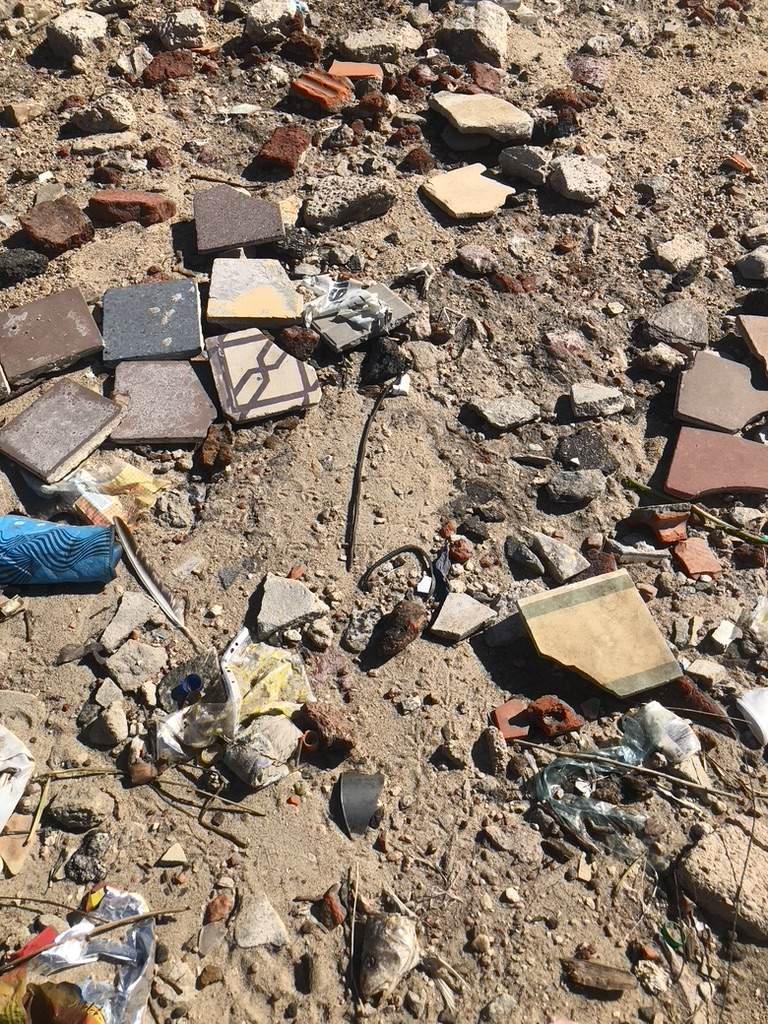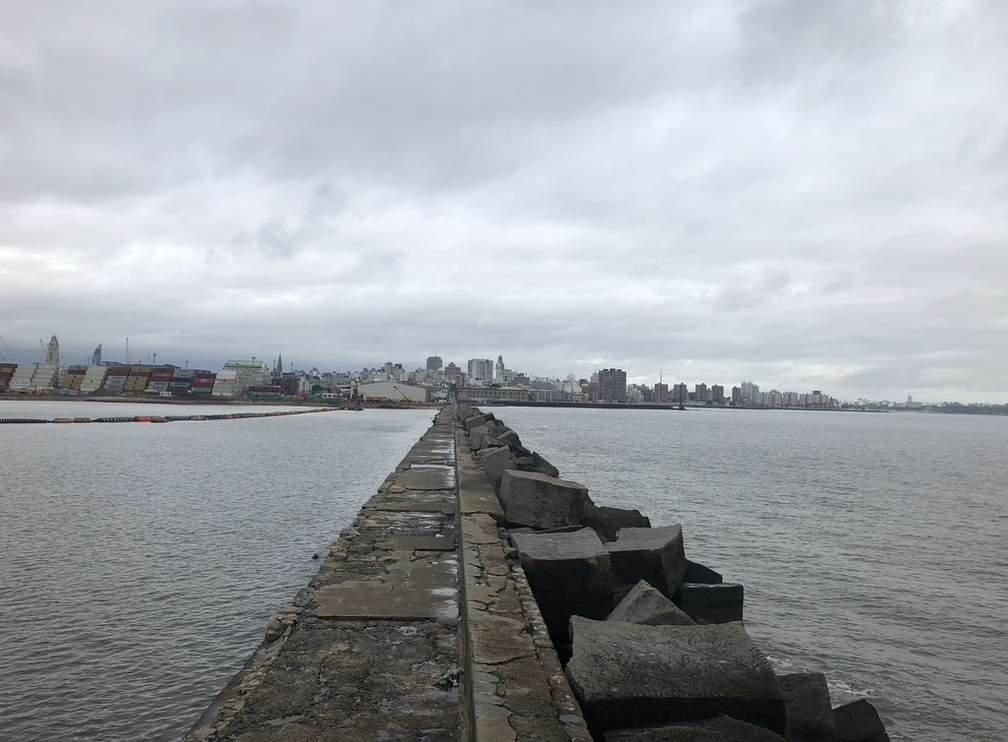

My Rivers in Uruguay
In Uruguay mostly in Montevideo I researched “the river”: real rivers and metaphoric rivers.
This are traces of this precious time.
February-March 2024
Clément Layes/ Aimé C. Songe
Rio de la Plata
The water of the Rio de la Plata is muddy because of sediment carried by the rivers that feed its waters. It mixes with the salty ocean water a little north of Montevideo but the limit is moving and depending on the days, the water become more or less salty. In this zone of transition between the river and the ocean sometime fishes die because they suddenly are not anymore in their element: the water becomes too salty and they can’t survive it, that’s why we find sometime, like on the day of my arrival a lot of dead fishes on the beach.

The Rio de la Plata in Montevideo is part of a very complex river system. The main units of this system are the eastern and western basins of the Río de la Plata, the Santa Lucía River basin, and the basins of the Miguelete, Pantanoso, Carrasco, and Las Piedras streams. In my research I focused mostly on the Miguelete and the Pantanoso which flow into the Harbour and the river Santa Lucia that flows trough the country north west-south east toward the Rio de la Plata.

The “playa Ramirez” is the popular beach close to the center of the city. I swim there almost every day. Placing my body in contact to the body of the water is the most intimate way to encounter the river. Here I often chat with random people happy to share about their life here and curious about what I do here.
At occasion I find candles and food on the beach, they are left over of the offering made to the goddesses of the water and sea: Lemanja.
It’s very hard to find a boat to go on the water. There are few rowing clubs where one can access kayak or canoe but only through membership and after a rather long initiation, in general going on the water is not a commun practice, people are afraid of the water of the Rio de la Plata.
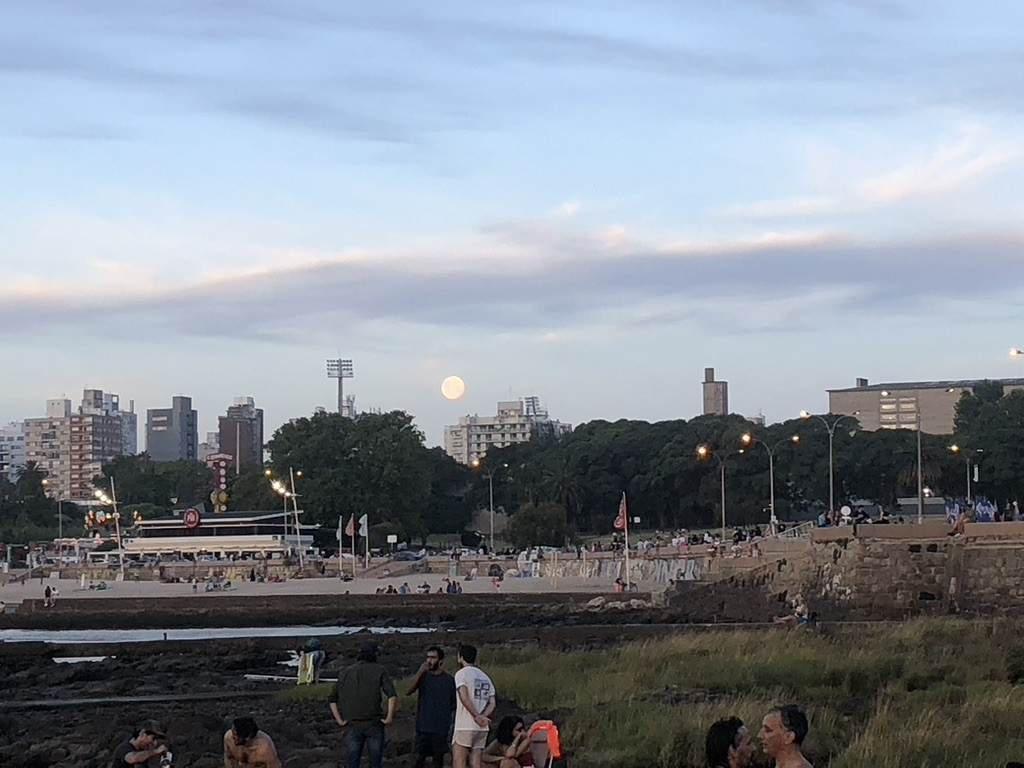
Walking around the city, I find an open air exhibition from the Cervantes Institut. A painting of Joachim Patinir, “Landscape with Charon Crossing the Styx” catch my attention. The allegory of the river carrying the soul away to the underworld is part of my research on the river.
At the time Patinir was finishing the painting (1524) the region of Uruguay was just being discovered and explored by the spanish. The pinging is 100 year older than the country of Uruguay (1624).

It’s the first time I cross the equator. Things and buildings are almost the same here, but with a different angle of the light
Later I speak with an architect that tells me about the southern cross: in the south hemisphere, before the colonisation and globalisation people were using the cross of the south to orientate south. Globalisation brought its logic orientated north to the polar star.
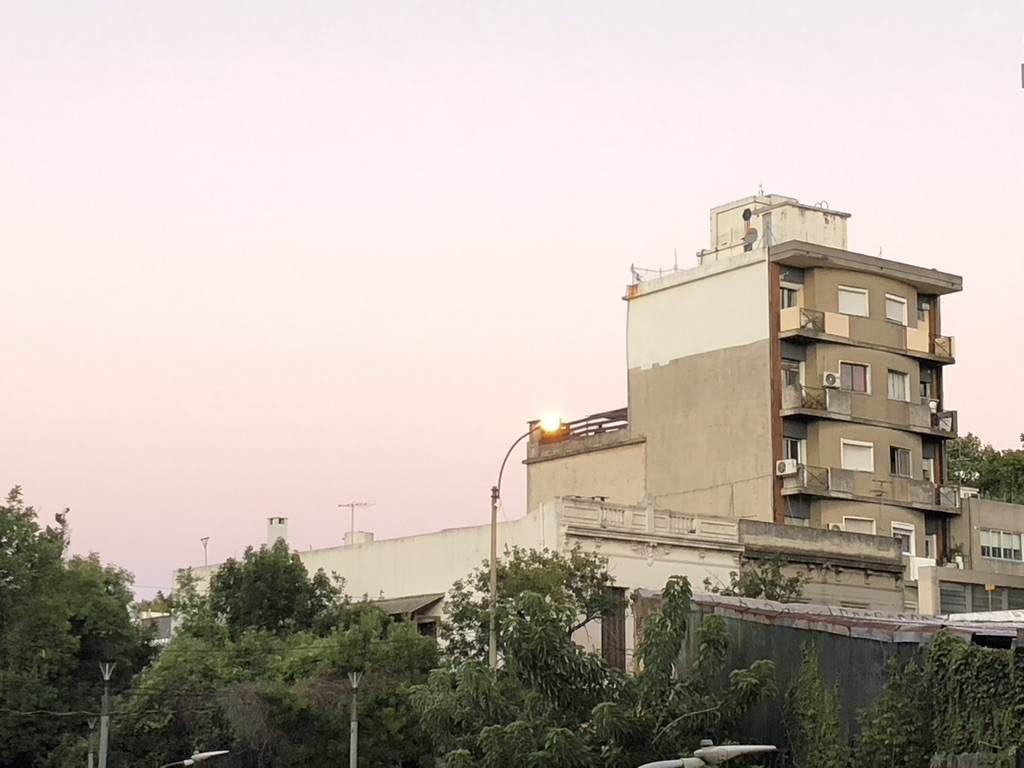
I’m puzzled by this outdoor exhibition. The display of classical painting into the urban landscape has a surrealist touch. The Immaculate Conception, a painting by Italian painter Giovanni Battista Tiepolo (1768). On a square of Montevideo.
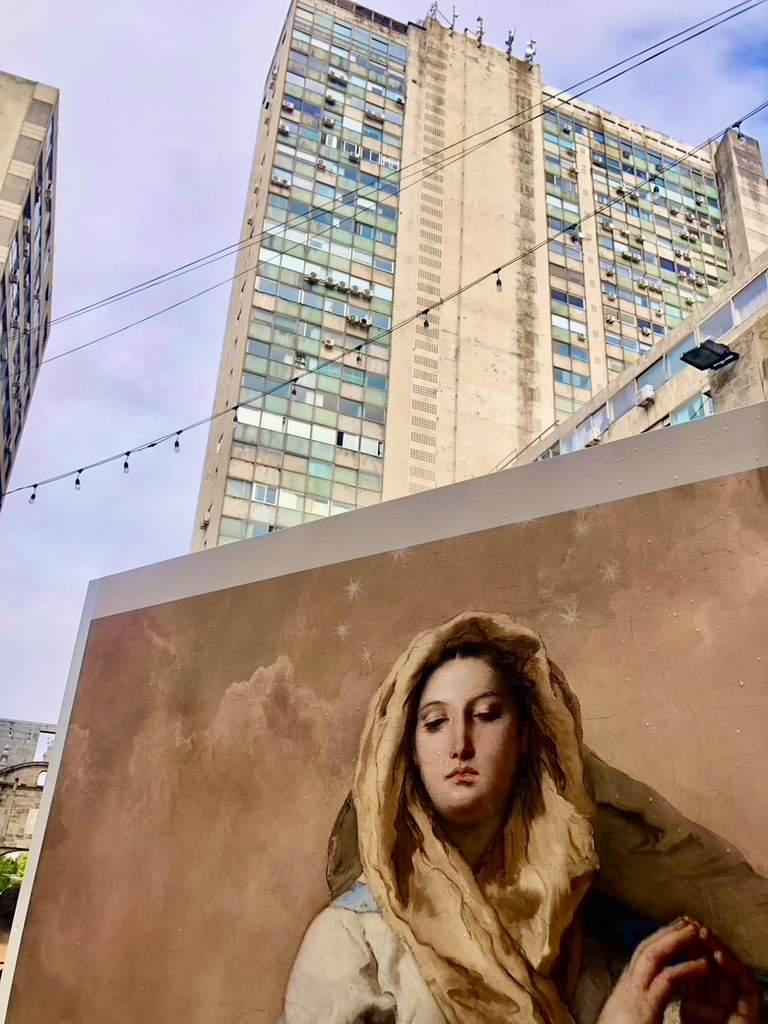
Hero of metal, strong and hard.
Nation state, against fluide borders and nomadic ways.
Where are the Charrua and the Guarani?
I look for traces of them, their absence is present everywhere between the solide concret structures.
I look for the sacred river to navigate life.

I go an exhibition in the EAC by the art department of the university directed by Ana Laura, they worked on the area of the city between the two rivers of the Miguelete and the Pantanoso.
Community work.
Elevation and dreams of perfection were the pillars of art in the classical time we inherit from. A mind that looks at things from outside. Without a body. Now we want a body. We want to engage with the mess of our post colonial time, it is dirty and muddy, we don't aim at catching a viewer’s attention and give them a perspective but to engage into the world and it’s realities.
For me working on the river means to acknowledge that non human actors, such as a river, are also the finality of their own being, like the Kantian human subject.
Where goes the water? Where does it come from?

My river has to do with grieve, creating funeral ritual, inventing ways to deal with changes. I share this with the anthropologue Dario Arce at the french institut, he describes a the ritual of the Charruas: when someone dies, the relatives cut a phalanx from their finger, I discover later that this ritual is also present in many other indigenous ritual all over the world also from very ancient time: in France, for example, 114 out of 231 of the painted hands in Roche-Cotard cave are missing finger, were the Neanderthals ancestors of the Charruas? It’s disturbing but if feels right to keep traces in the body of the presence of dead loved one, also a reminder of the fact that death is the presence of an absence.
I read later about the Guarani’s funeral ritual: they sing, dance, and intone prayers. “To protect themselves from a possible danger caused by the deceased, they break all ties with him and exclude him entirely from the group’s memory. Because his place is now part of the cosmos, his possessions are buried or given to others. When someone dies, they abandon the village. The deceased’s soul continues to bring various messages from the gods to those left behind. The skeleton represents the main instrument of communication with the divine.”
A pipe of the guarani people at the exhibition of Leguy and Ortega at the EAC. Tabac is one of the master plant in Indigenous ceremonies.

My project with “the river” is meant to find ways to make peace with what we loose, learning to grieve. There is so much anger and fear in me connected to the loss of ecosystem and climate change. A system that benefit the few manages to destroy living environment to a scale we never even knew to be possible.
On the trash I read: “if there is no water there will be fire”

On the bridge at the Santa Lucia delta: “for earth, water and life, no to the mega-project”

Rio Santa Lucia
Almost all of the drinking water of Montevideo comes from the Santa Lucia. In 2023 a very strong heat dried the river and the salty water of the Rio de la Plata came up into it. As a result the drinking water became saline, and the legal level of salt in the water had to be raised to abnormal levels, leading the water to become officially dangerous for pregnant woman and infant. A year later, few days after I arrived I went to a festival in the city of Santa Lucia, by the river of the same name, 1h30 from Montevideo. I was organised by Marcos Umpièrrez, an artist and activist, member of the “assemble del aqua” that protects the Santa Lucia. Marcos, proposed to the local community to celebrate the river by constructing small rowing boats and decorate them, making parades around the bridge from where they could be seen by the audience.

I am fascinated by the ways groups can become collectif.
“La assemble de la agua”, through the creation of a popular laboratories, tries to do that: the people empower themselves to protect the river and control the level of pollution this in the background of the lack of control of the authorities, and it’s tolerance to industrie’s rejection of waist into the river. I understand the idea as an imperative to stop acting as individuals but rather as member of collectif that also include the non human actors, in this case, the river.
Marcos as a co-creator of “la assemble de la agua” shared with me a founding moment of the collectif. The group (between 20 and 40 people depending on the meetings) decided to write a song to defend the river. Marcos, described the process as a passionate and deep experience, where unexpected things could be expressed, where the emotions were very strong but ideas and passions could be expressed and heard. The song is based on the melody: “el pescador” by Toto la Momposina, the lyrics described the river, the fight for it and the exploitation.

Delta
Later I go to the delta of the Santa Lucia. It is a very interesting place: there the river enters the Rio de la Plata. It is a large and rich humid zone, with lot of pecies, and a complex ecosystem.
There is also the small city of Santiago Vasquez, famous for its large prison.
Few month after I left South America, large flood transformed the city of Santiago Vasquez into an island.
The change in the climatic regime will affect Montevideo to a great extend. A lot of the infrastructure being build now on the coast will be rendered useless.
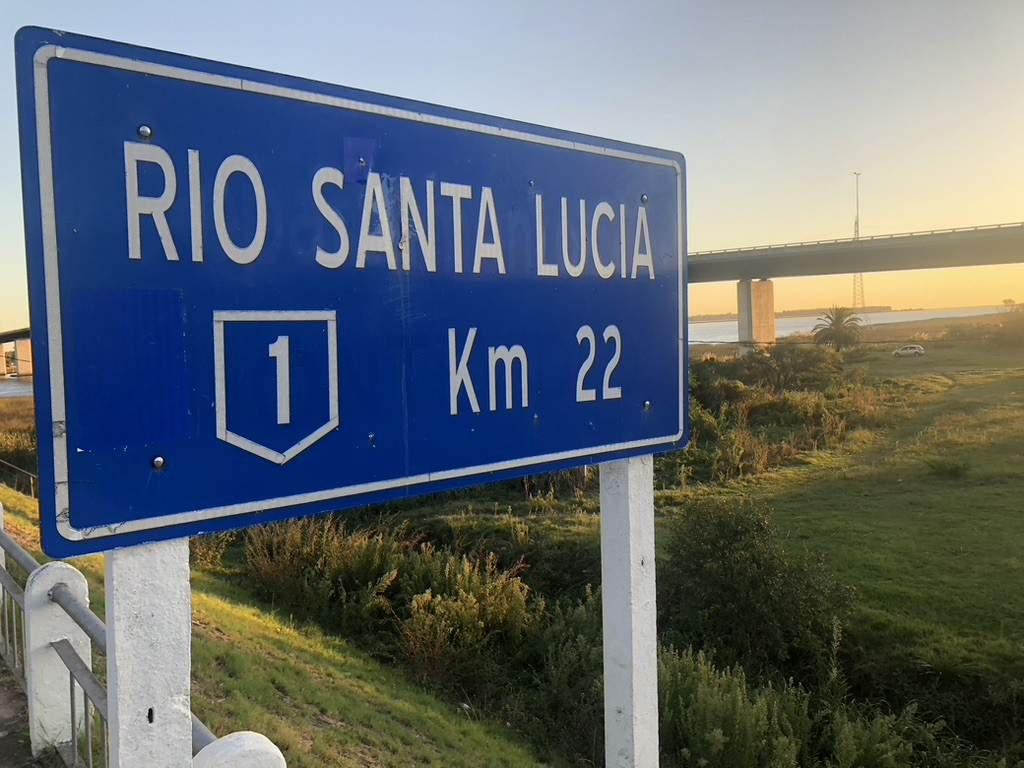
The Santa Lucia is a very resilient river, particularly because of it’s sand ground that helps it cleaning itself. The wetland is a very well protected area. I find interesting that wetland are described as “sponges”, they absorbe and retain, they are a place where the connection between rivers and aquifer happens on a large scale.
Aquifer are sorte of undergournd rivers.
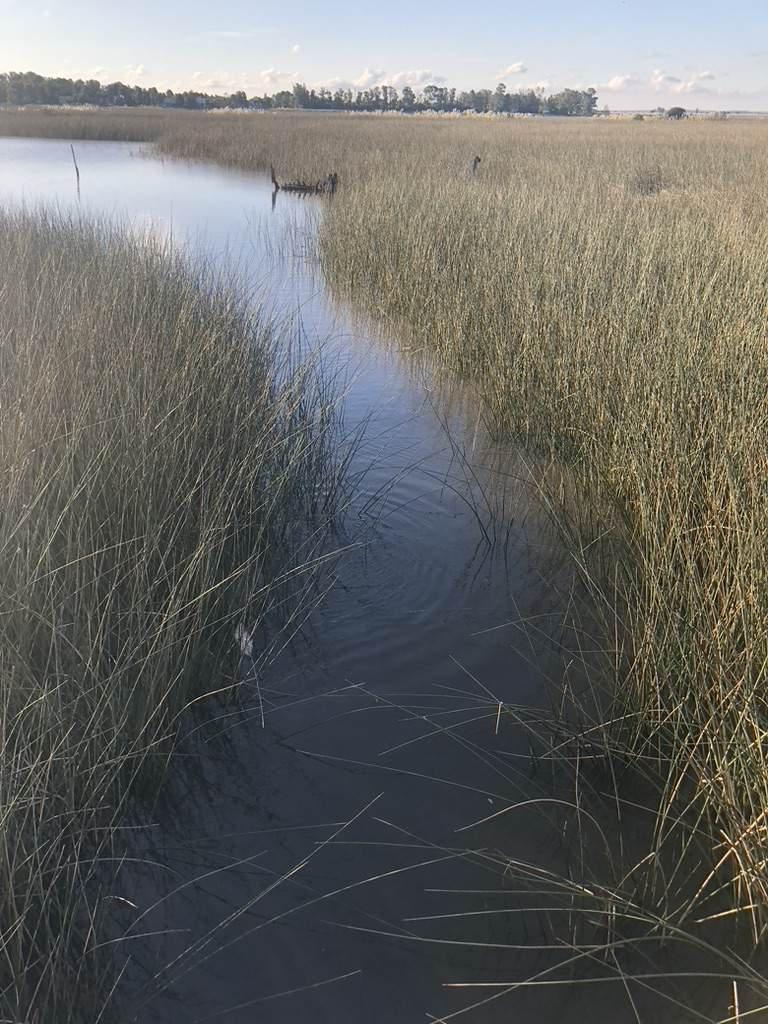
I’m a modern animist, I like to think of the river as a giant body of water that goes from spring to ocean. It’s a very fluid body, with morphing borders, it shares its water with other bodies of water: aquifers, other rivers, sea, but also with all the living being at it’s bank: the trees, plant, animal that drink it’s water, it participate in the climate trough evaporation and temperature regulation. and human moving next to it are part of it. Once I think of myself as a moment of the river, a part of the river, my relation to it enters a new dimension.

Spring.
At the mythic Bar La Ronda I meet the artist, philosophy and psychoanalyst Lourdes Silva and the architect and sound artist Pol Villasuso. They followed the Santa Lucia from spring to Delta and surveyed it with sound recording.
Lourde speaks about her research around a certain unic plants that grows only at the spring of the Santa Lucia. That remained there, unchanged, for millions of years. This example of a preserved environment is placed in contrast in her research with the plastic and the hybrid bodies that enters and modify the world. It also reminds me of a project I did after the death of my mum: “coming back to the spring”. Trying to understand what is a spring I made a researched for each river I crossed looking at it’s path and spring. On my way to Venice Biennal of theater where I was performing, I crossed the river Izonsso, in Italie, that has it’s springs in Slovenia, it is known for a unic specis of marble trout, that were extinct but were rediscovered, preserved in one of the remove mountains up the river Izonsso. Our relation to the preservation of this unic species is very complex, of course we need to cherish and preserve species, but at the same time a certain ideology of purity appears in this discourses, while nature is made of endless hybridation, there is not such a thing a purity. Laure interrogates the accelerated hybridation we experience: “I began to collect what I called: News of the hybridisation of the world:(…) Trinetite appeared as a metaphor for this amalgamated world, a stone generated by human action, more specifically, by experimentation with nuclear energy and the subsequent warming and melting of the soil, toxicity generates a residue on a planetary scale modifying the geological composition. It seems that the worlds are melting materially and ontologically, giving rise to a new type of tissue: shapeless bodies that break the linearity of time, gender and species, questioning the human perspective, its scale and its organization (…) Things become complex mixtures and speak, the artificially called natural mixes with the political and the narrative, as in a plastiglomerate algae, petroleum and minerals coexist.”
When we speak about “river sources” it’s important to have this in mind, the flux is not one thing, one unit, it’s a complex assemblage of species and geologic component that forme the rivers. We are part of it.
What happens at its bank is also a constant negation between species.
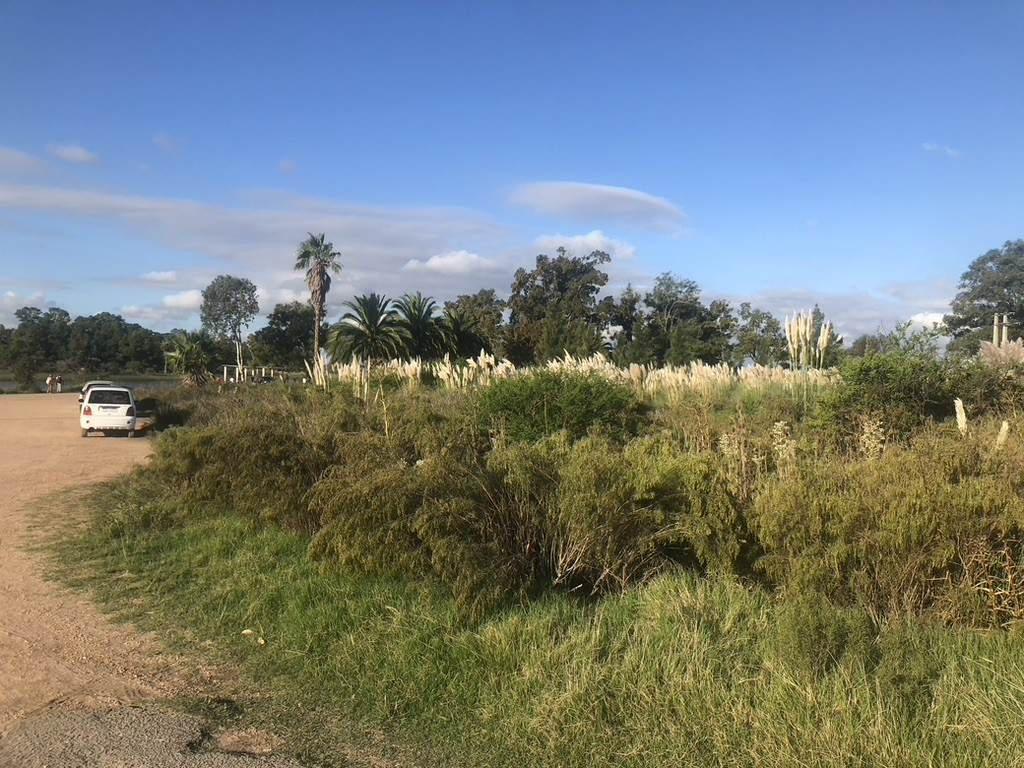
Miguelete
Coming back to Montevideo I look at the small Miguelete: it enters the natural harbour after passing through the city. It is not navigable. It used to be very polluted but it was cleaned recently, and is seen as a success in finding back a relative healthy state.
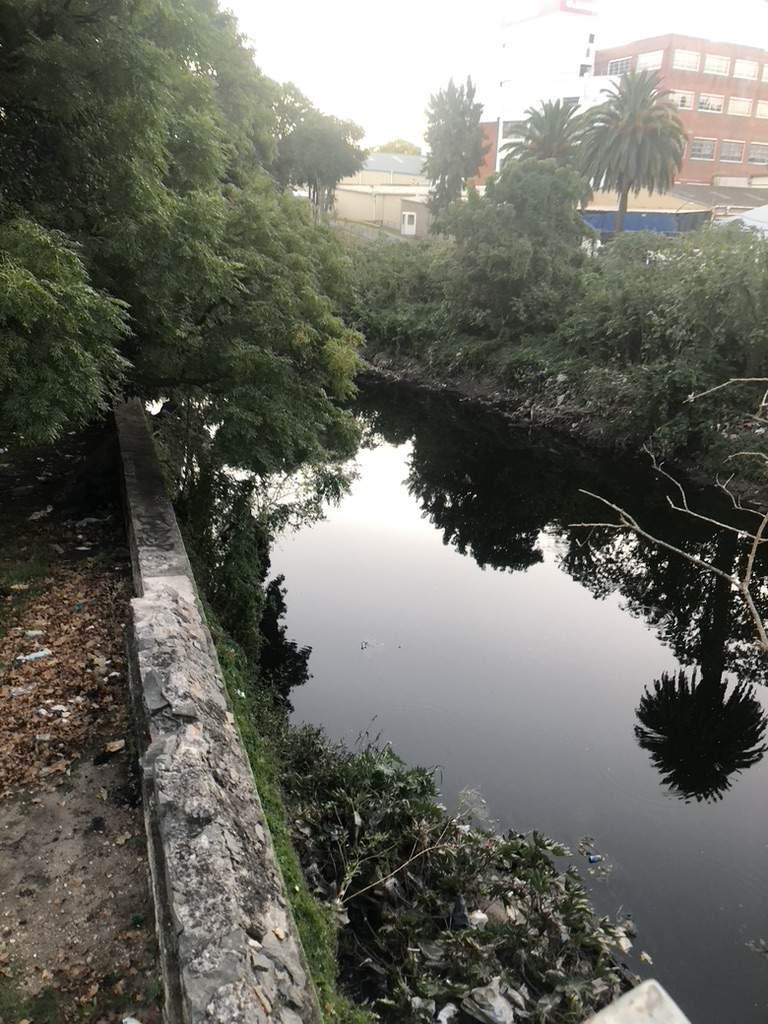
On the Miguelete, close to the harbour, the people live in improvised construction, far from the wealthy neighbourhood up in the center. Ana Laura works here since some year, engaging with community and bringing her ressources to reinvent with them living here. She invites me to do the “river cards” with children living around. With her assistant we play with them and draw cards. All the boys want to become football player and they ask me if I know Mbappé.
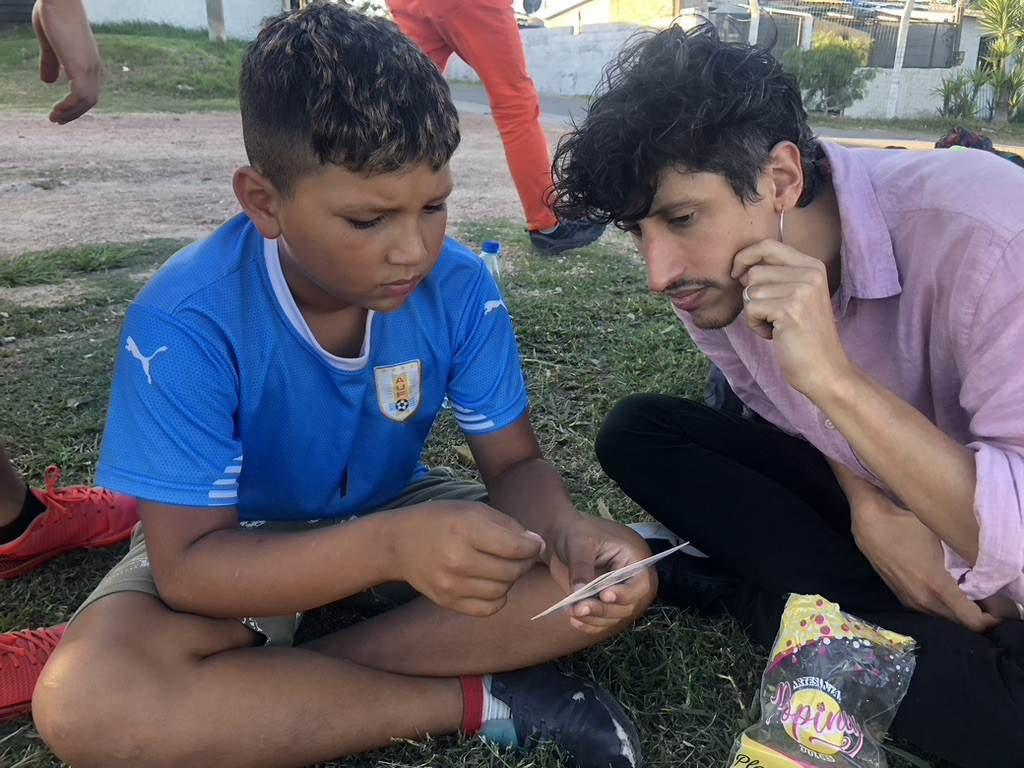
Not far from here is the Pantanoso, also ending into the natural harbour. It is an extremely polluted river, it smell and just passing next to it makes me a little sick. The Pantanoso has a wetland, and is surrounded by poor neighbourhood without much canalisation: almost everything ends into the river. Some of the last descendant of the Charrua live here.

Harbour
with Ana Laura we go through the unreal landscape made of hangars, roads and new construction around the Harbour. A mixture of abandoned and new, she tells me that this is the center of the extractives machine in Uruguay.
Montevideo’s harbour used to be the place where illegal goods were being brought to south America while the official harbour of the region was in Buenos Aires. Nowadays the harbour of Montevideo became the largest hub for south American transport toward the Atlantic but still inherit from this time of grey economies (e.g. lots of containers are stored without anyone knowing what is inside).
Lots of infrastructure are being build to facilitate the harbour machinery, particularly a train line that connects directly the north of the country in order to bring the eucalyptus extracted and shipped direct to Europe and china in giant containership. What is very striking is the speed at which things transform here. It raises lots of questions about the heritage of colonialism, and their relation to the new extractives structures implanted here.
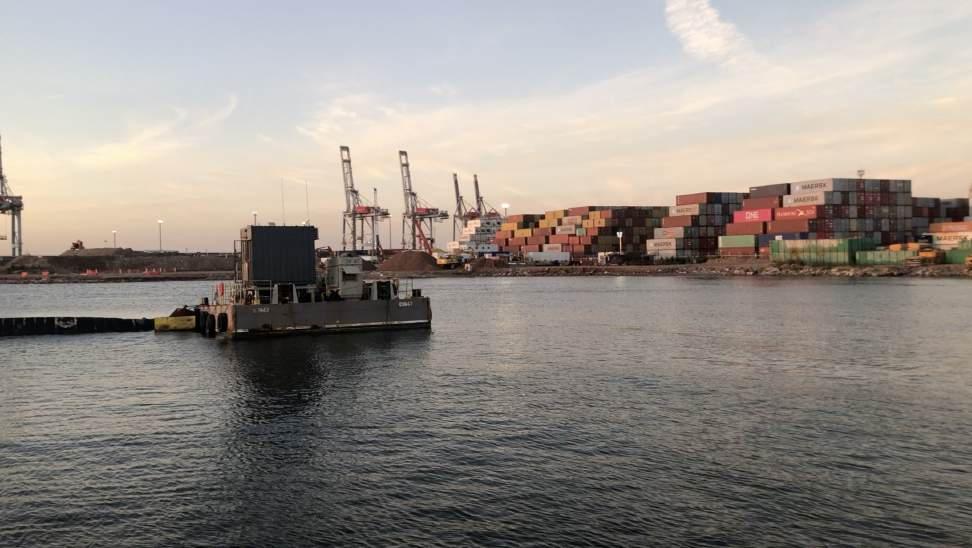
The bay of Montevideo seen from my plain. It’s a natural harbour.


We reach the last remaining beach of the bay, it used to be the place for the bourgeoisie of Montevideo to come swim. Since few years, the water is less polluted and Ana Laura sees a time when it will be possible to swim again here. Part of her work is to make accessible the beaches to people, and indeed with the pollution the people living around had no access to the water.
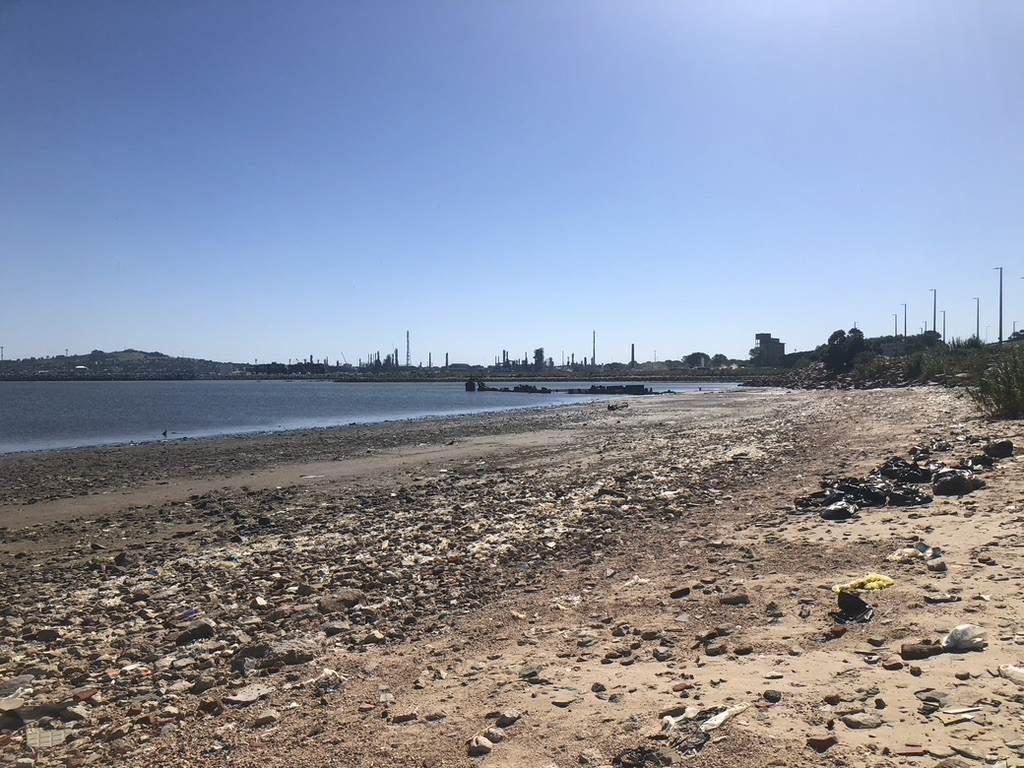
The day I arrived, I noticed a boat entering the harbour, I filmed it and later I looked for it on the internet. The Draga D-7 is a hopper dredger build in 1970. Online you can find follow commercial boat, their history and destination. I regularly followed what the Draga D-7 was doing.

One evening on the harbour, a giant tourist boat called “Eclipse” was passing in front of the sun at the same time as the sun was disappearing behind the sea. I made a small movie and placed the music of Totó La Momposina, “el pescador” on it.
It’s the only artwork I did here.
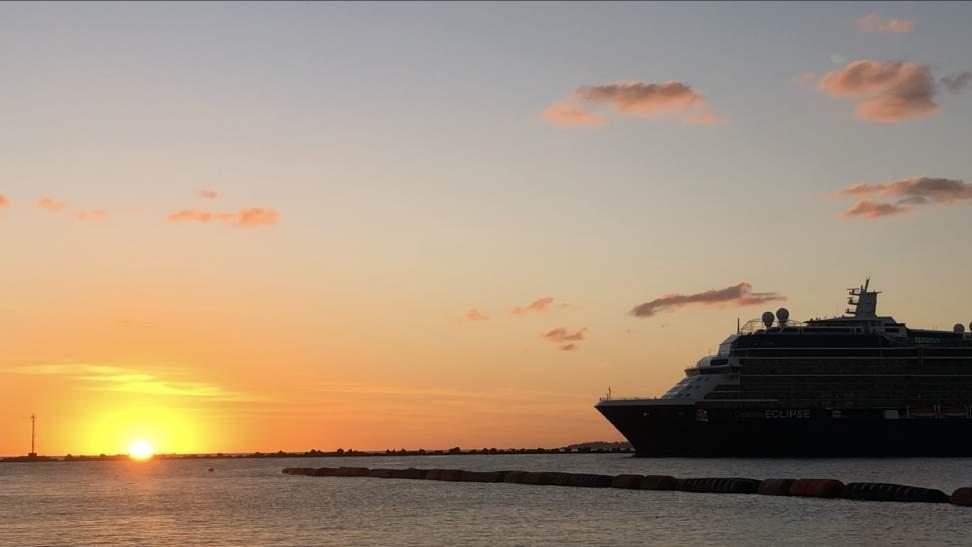
With my friend Felix and his son we travel north est until we reach the ocean, living the brown water of the Rio de la Plata and finding finally the blue and salty water of the Atlantic. It’s an 90 minute away but the landscape is completely different. At the beach, lots of oyster lying on the sand.
The sky seems to teach me something about the ocean’s eternal water and nearby people fly by helicopter to party at the famous Punta del Este.
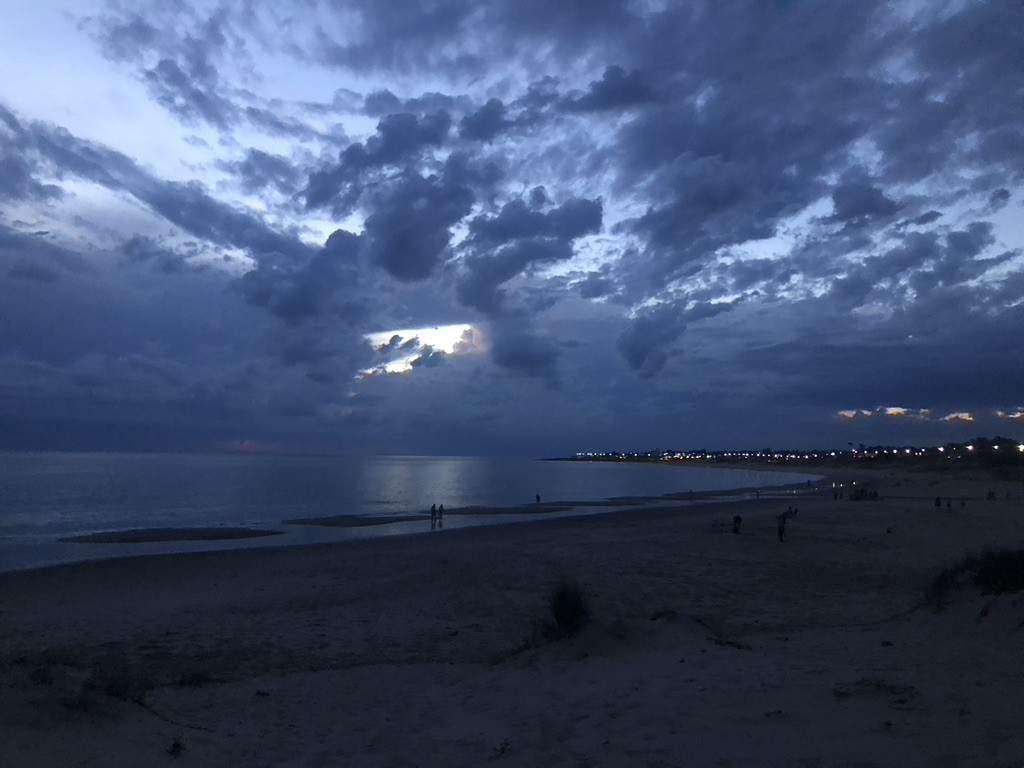
I take a boat crossing the Rio de la platter to Buenos Aires. Endless brown water of the Rio de la Plata. This water is gathering a very long list of tributaries rivers, the biggest being the Parana river, the Paraguay river and the Uruguay river.
Their name coms from Guarani language, means something something like: “river parent of the sea”, “river born of the sea”, “river of the Uru (small bird)”.
The Rio de la Plata, means “river of money”, it relates to the myths of the conquistador that a mountain of gold would be up its stream.
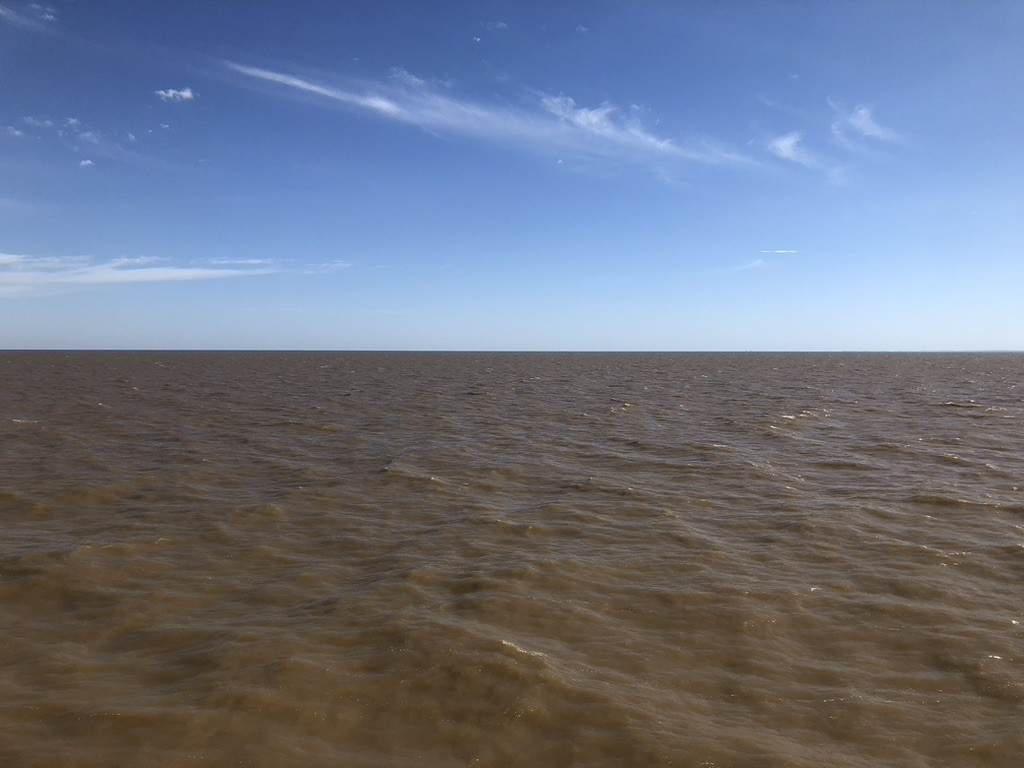
My new friend Victor Leguy in residency with me works with the filmmaker Ariel Kuaray Ortega, he has an exhibition in the EAC, Ariel shows me the wooden animal made by the Guarani that will be part of the show.
I discover later about the Guarani Aquifer, partly in Uruguay, Brazil, Paraguay, and Argentina. It is one of the biggest reserve of fresh water in the world. Named after the Guarani people, it covers 1,200,000 square kilometres and go as deep as 800 meter under the ground level. A water country under the earth.

The sunset is a magical moment to acknowledge our daily dying: one day has past.
Since the down of humanity.
During the festival of Santa Lucia in Santiago Vasquez the sunset is so incredible that the police tried to capture it.
In vain, it went away.

Credits
Thanks to the Goeth institut and Manfred Stoffl for initiating this trip, to the Goeth institut in Uruguay to make it possible and the precious support of Irene Muller during the stay. Thanks to the EAC (Espacio de Arte Contemporáneo) and it’s team, particularly Marcos Medina and Valeria Cabrera for hosting me and helping in navigating the city and it’s water. Many thanks to Felix Marchand and Ayara Hernandez and Fantastico for meeting so many artist and the chance to presenting my work “allege”.
Many thanks to all the choreograph, artist, activist, philosopher, filmmaker, anthropologue... for their inspiring discussion, time and friendship:Ana Laura López de la Torre, Ayara Hernandez, Dario Arce, Fede Geller, Felix marchand, Lourdes Silva, Marcos Umpièrrez, Magdalena Leite, Victor Leguy, Pablo Villasuso Cortès…
